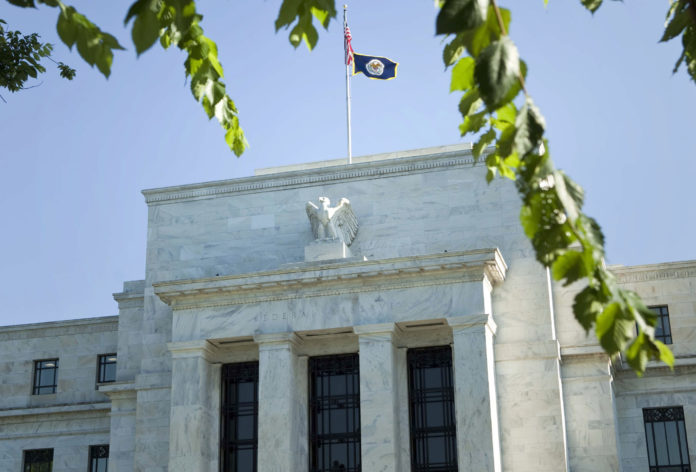
NEW YORK – While bond and currency traders still see a Federal Reserve rate hike Wednesday as all but baked in, the latest disappointing U.S. inflation report has them tearing up their guidebooks for how to react to the central bank’s pronouncement.
One key question heading into the meeting was how officials would address the outlook for inflation, expectations for which have been fading. Judging by the reaction to consumer price index data Wednesday, traders have already reached a conclusion: Even with the unemployment rate at the lowest since 2001, markets are betting policy makers won’t be able to brush off weaker-than-expected price growth, casting doubt on the prospect of additional rate hikes this year.
Strategists at BMO Capital Markets had previously seen a base case of Treasury yields rising after the Fed decision, predicated on officials signaling little movement in their median forecast for the path of rates. Now the analysts see a dovish scenario as much more likely. That would entail a decline of nearly 13 basis points in five-year yields from the start of the week. They’re already more than halfway there.
“The whole ‘inflation-and-GDP-weakness-is-transitory’ narrative seems to be coming apart at the seams, and that’s a pretty risky spot for them to be,” Aaron Kohli, a fixed-income strategist at BMO, said Wednesday in an interview. “It definitely does highlight that there’s very little upside to them being aggressive at this meeting.”
Core CPI fell to a 1.7 percent year-over-year rate in May, the lowest since 2015, according to Labor Department data released Wednesday. The median estimate in a Bloomberg survey called for 1.9 percent. The 10-year U.S. breakeven rate, the bond market’s gauge of inflation expectations, tumbled to 1.73 percentage points, the lowest since November.
Meanwhile, the benchmark 10-year yield fell to 2.12 percent, touching the lowest since Nov. 10.
Rally Foretold
In the “dovish hike” scenario contemplated by TD Securities strategists earlier in the week, the Fed would reduce inflation projections and Chair Janet Yellen would note the risk of a more persistent slowdown in consumer-price growth in her press conference. Officials would also lower their median forecast for rate hikes, in what’s known as the dot plot. For investors, that would fuel wagers on a Fed pause after June.
“Any further indication that inflation is weighing on their mind could move the market more toward that one-and-done mentality,” Erik Schiller, head of developed-market interest rates at PGIM Fixed Income, which oversees $654 billion, said before the release of the inflation data. “There’s scope for intermediate yields, particularly the five- to seven-year sector, to move lower.”
Officials’ current projections, released in March, are for a rate of 1.375 percent by the end of this year and 2.125 percent 12 months later. Meanwhile, fed funds futures are pricing in less than half of an additional quarter-point hike for the rest of 2017, data compiled by Bloomberg show.
Ian Lyngen at BMO said after the inflation data that “this effectively takes September off the table.”
Karl Schamotta, director of foreign-exchange research and strategy at Cambridge Global Payments in Toronto, said in an email Wednesday that the Fed’s plan to start trimming its $4.5 trillion bond portfolio may be delayed as well.
With yields tumbling, the Bloomberg dollar index has dropped about 6.5 percent this year, in a reversal of fortunes after it rallied into year-end as part of the reflation trade. Hedge funds and other speculators have cut net bullish positions to the lowest since May 2016, Commodity Futures Trading Commission data show.
In TD’s dovish scenario, which strategists said was more likely if CPI missed estimates, the dollar could drop to 108.80 yen, from about 109 now.
Brian Chappatta is a reporter fro Bloomberg News.












